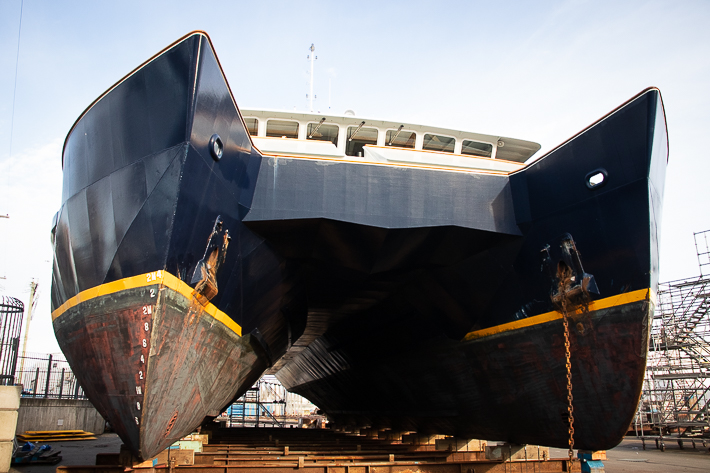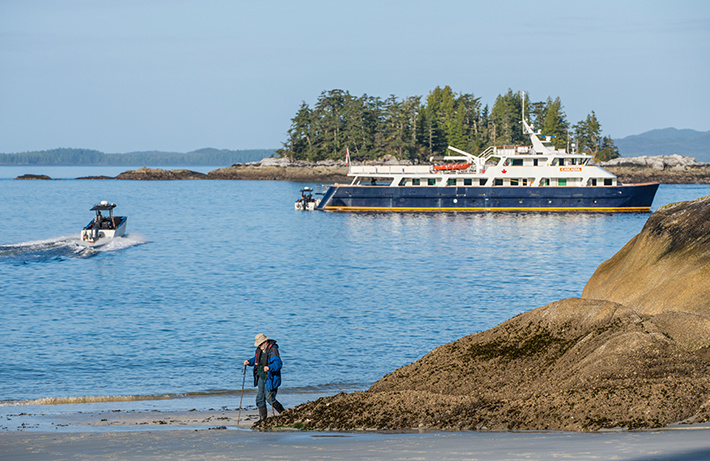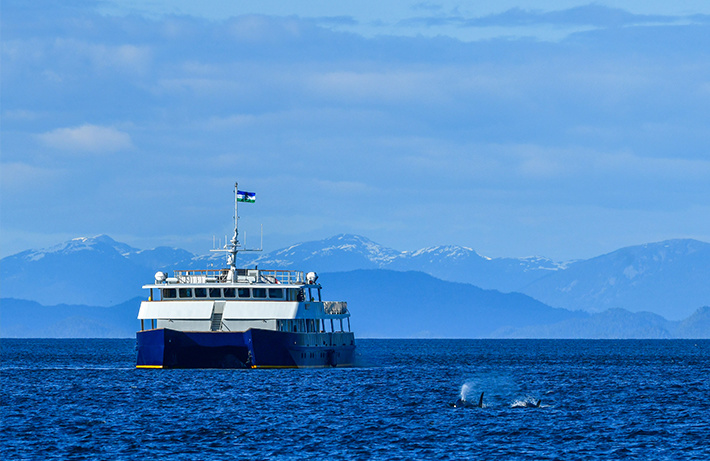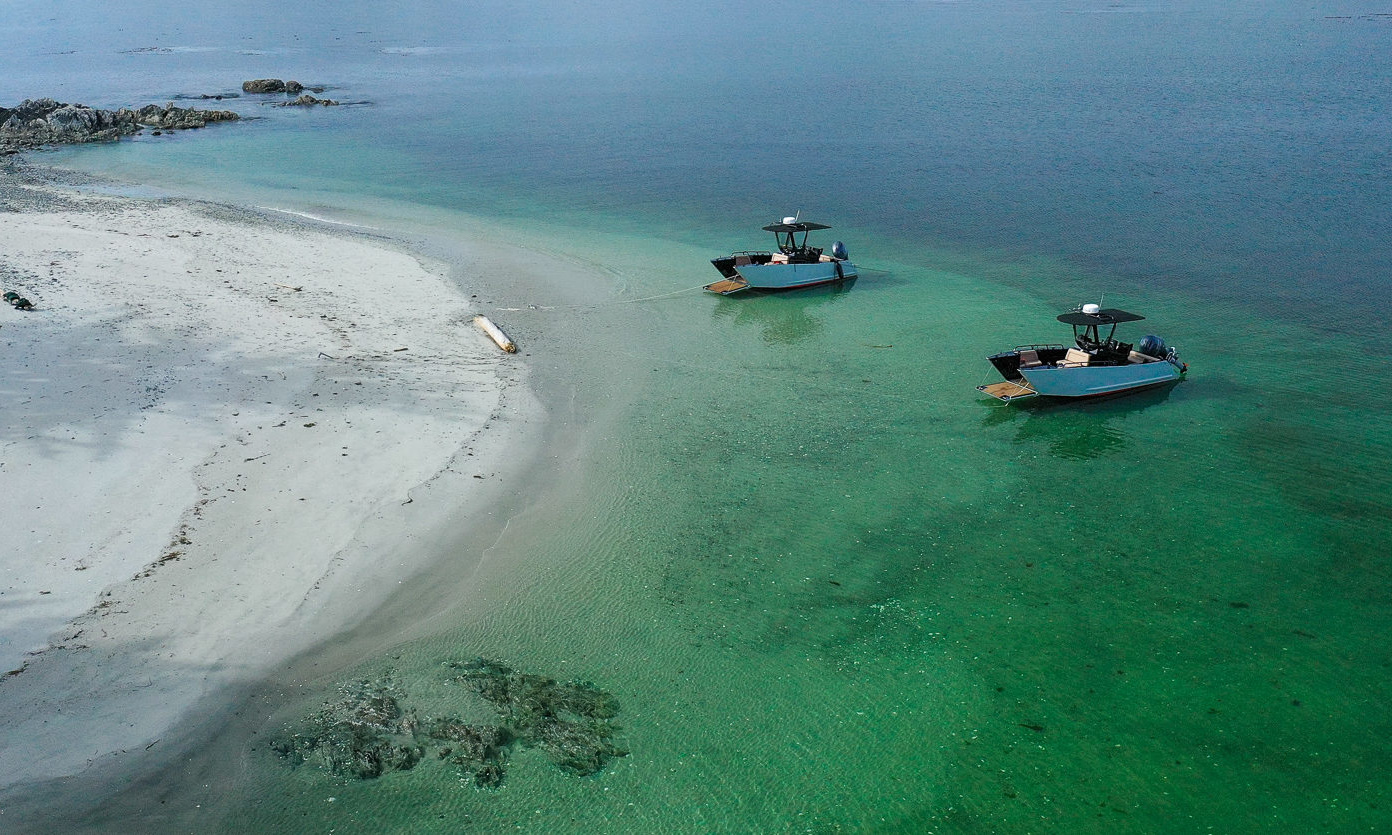Report From The Shipyard: Cascadia Gets New Propulsion Engines and Gears

Point Hope shipyard, Cascadia’s home for the winter. Photo: Jordan Lambe
The on-and-off rainfall has done little to dampen the spirits of the Maple Leaf Adventures crew as their annual shipyard work gets underway.
In an unprecedented time for the tourism sector, this work gives some of our crew employment over the winter, as well as a deeper understanding of the ships’ unique character and capabilities. The next time you travel with us, you’re likely to find the friendly folks who serve your wine may also understand how the ship is plumbed, wired or built.
There’s plenty of work as usual going on all around the hull of our three vessels, but one of most exciting additions comes in a pair of Cummins X15 marine engines for our go-anywhere, expedition catamaran, Cascadia.
Out with the old, in with the new
Did you know that while Cascadia was built in 2007, her engines were manufactured twenty years prior for a fishing boat in the North Sea? And to be clear, that’s nothing to scoff at.
This era of engine offered extreme reliability, and while much larger than modern engines of similar horsepower, what you’d get back is dependability well-suited to long periods at sea. Ideal for trawling for mackerel in the Atlantic, or cruising remote river estuaries in the Great Bear Rainforest.
Her engines have served us well, but the boost in horsepower and higher fuel efficiency have us rapt for the X15; it’ll take the ship’s current cruising speed from eight knots up to about nine and a half, and our engineers won’t complain about the extra space they afford, either.
The upgrade also comes with a computerised control module, providing advanced diagnostic and monitoring capabilities. It means we’ll know exactly how much fuel is being used, and if there’s a problem with the engine, before it becomes a problem.
Reducing our footprint
Sustainable travel is more than just a line item for Maple Leaf; it’s an intrinsic part of our DNA. That’s why we’re proud that Cascadia’s new engines will consume about a third less fuel than the ones before.
This is thanks to the X15’s common rail system which offers the highest injection pressure in its class, resulting in an efficient fuel burn for cleaner emissions and optimized fuel economy.

Aboard and ashore, our guests participate in a growing conservation-based economy. Photo: Jeff Reynolds
We’re already committed to leaving nothing behind in the natural areas we visit, and despite the hardships that came with the pandemic, we never stopped giving to important conservation efforts on the coast. From carrying out the largest ocean cleanup project in BC history, to active involvement in advocating for wild salmon and supporting bear research and community stewardship on our coast, every one of our interactions with the natural world is underpinned by actually walking the talk of regenerative travel.
Let’s talk about eliminating another kind of pollution, noise
If you have travelled remote corners of the world aboard a sea vessel, you’ll understand that moving through the silence can be pretty noisy. Well, our new engines will allow our guests to explore some of British Columbia’s quietest places without worry of engine noise interrupting the moment or disturbing wildlife.
It’s worth noting that Cascadia’s engines are a lot smaller than large yachts and cruising vessels. We move slowly always, and even slower when in the presence of wildlife, therefore producing relatively little noise. And we’re always looking for ways to go even quieter.
Not only will the X15 naturally produce less noise, we have invested in a state-of-the-art muffler system to reduce what noise is produced, and we will use soft mounts to connect all the machinery together. Importantly, soft mounts reduce or eliminate the transmission of vibrations and noise from an engine through a ship’s hull. We think people will really notice the difference.

Our coast is home to many species of whales, who rely on sound to navigate their environment. Photo: Philip Stone
Our guests aren’t the only consideration though, we are committed with this refit to making Cascadia even more whale-friendly. When we’re idling, the engines’ resting speed will be considerably lower, making her close to silent much like our smaller ships.
The ears aren’t the only place you’ll notice a difference: modern engines create less vibration making for an all-in-all smoother sail. So there you have it – if you have yet to explore the remote fjords, isolated beaches and whale-rich channels and bays of British Columbia aboard Cascadia, our next season is shaping up like a perfect time to do so. Keep posted for future updates from the shipyard!
